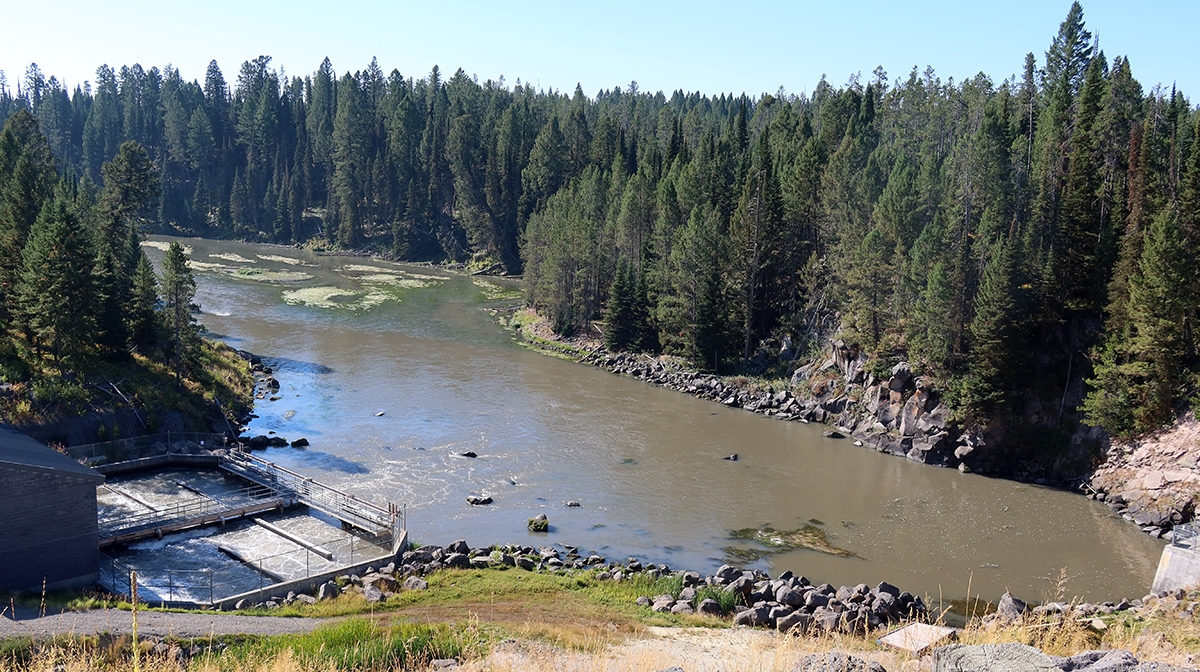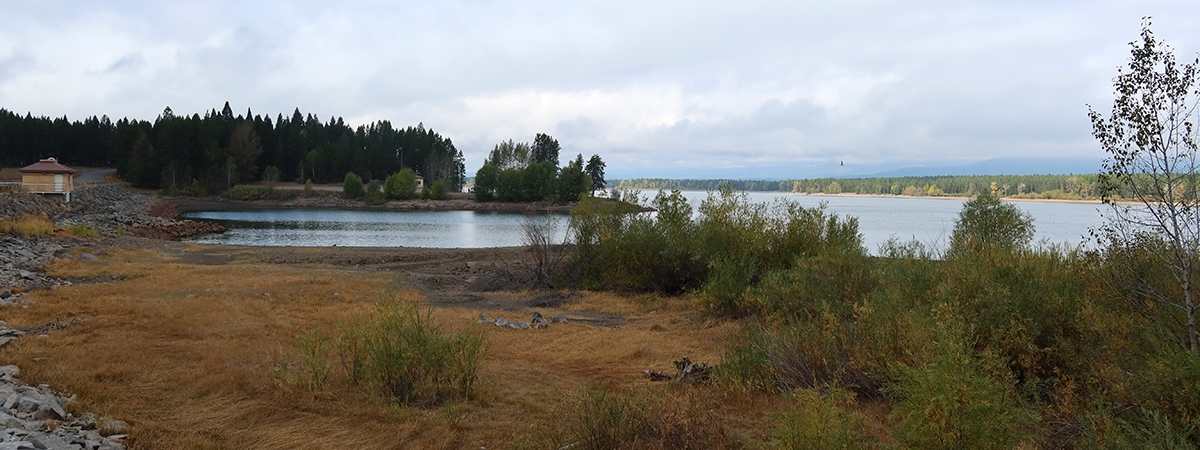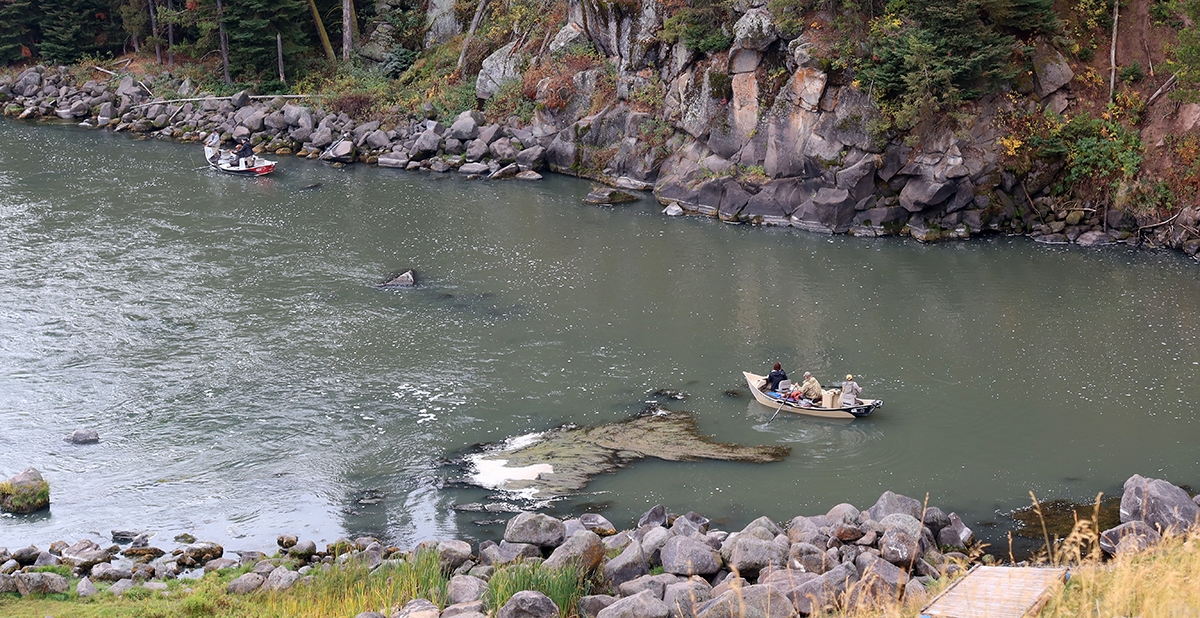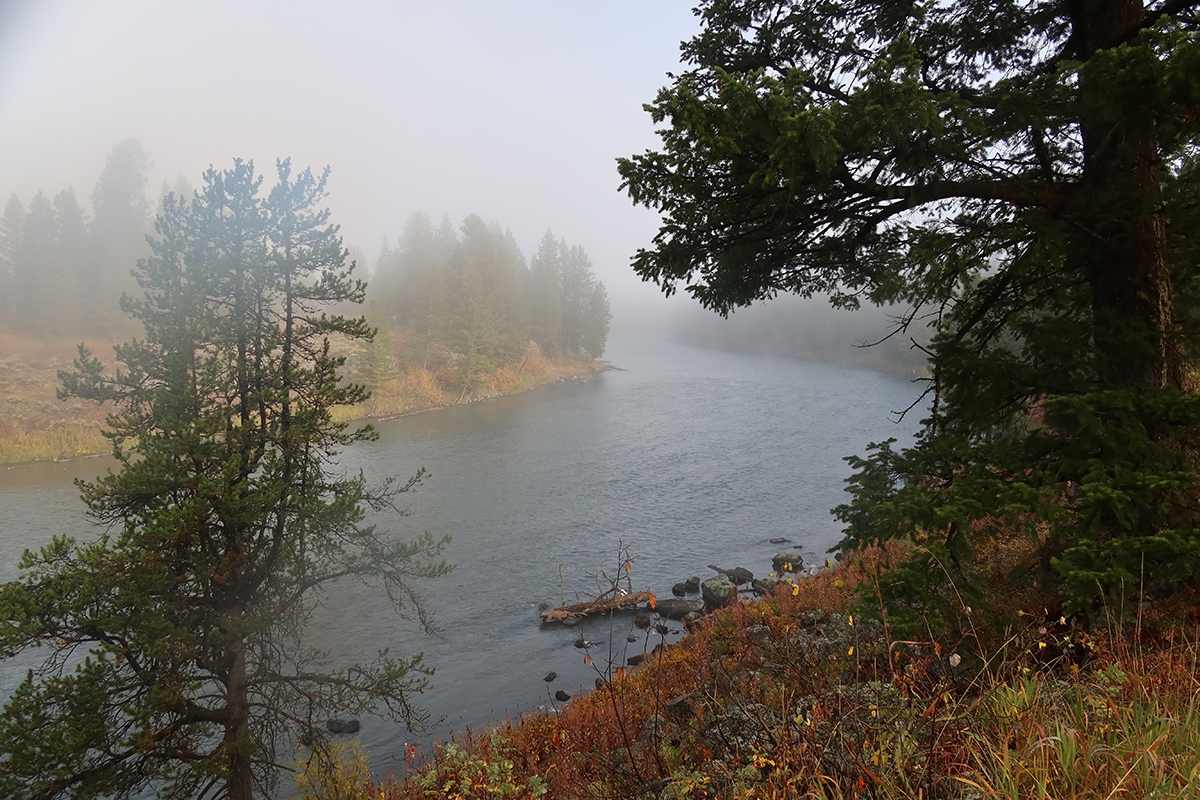
Many with close contact with the river have known for more than a decade of a vast volume of sediment that accumulates on the upstream side of the dam. Also quite well known is that little formal attention has been directed toward this sinister and growing threat to the valuable trout fishery in the stretch known as the caldera section. Included within this designation is the highly revered Harriman State Park, more commonly known as The Railroad Ranch. This wide, shallow, and slow-moving portion is particularly vulnerable to sedimentation. Much of this sensitive portion continues to carry the effects of the massive sediment event of nineteen ninety-two and the health of the fishery has never completely recovered.

While sediment inflow at this time falls well short of that extreme and historic catastrophe, it is frightening to contemplate the possibility that what we are seeing right now might become the new normal for the beloved river.
This discouraging prospect is prompted by the fact that all sediment of recent entry now flows through the hydroelectric facility. This critical aspect of maintaining water clarity in the river relates to the status of the seldom used outflow tunnel on the opposite side of the dam. With the gates of the original release system usually closed, years of sediment flowing into the reservoir has been allowed to accumulate to a point where any use of that outlet results in considerable and instant downstream turbidity.
With water from the reservoir drawn consistently through a penstock, operation of the hydro plant has resulted in superior clarity downstream when compared to the other option.
With sediment introduction now coming from either release point, there appears to be no way of managing the outflow of this menacing threat to a healthy river.
The substance of these comments contains a reality known to all holding interest in the status of the Henry’s Fork. This includes individuals and organizations that include irrigation and hydro electric interest, FERC, BOR, and the Henry’s Fork Foundation. It was the latter that released an official press release appearing in the 9/17/20 issue of Island Park News.
From the beginning, I have been an on-sight observer of this crisis. While the stiff north wind put a chill on Island Park, we did not experience the force that wreaked havoc at lower elevation. Neither did the temperature fall to levels uncommon at this time of year. To say that this brief weather event caused the reservoir to turn over at that time is presumptuous. Additionally, no significant change of water clarity has been observed in the reservoir subsequent to that windy cold front that did bring a short flurry of snow.
In the four days between the end of the weekend storm and the first appearance of severe turbidity the river ran clear and fishing was excellent. Therefore, it is logical to conclude that the massive inflow of sediment was caused by something entirely different. However, there was one natural occurrence that could possibly hold the real explanation for the sudden entry of sediment through the hydro plant.
In the same issue of Island Park News that contained the HFF position on the 9/11/20 sediment issue there appeared the following news item.
Quoting that report, “A swarm of 91 earthquakes rattled the Yellowstone National Park region in the just twenty-four hours on Thursday (9/10/20) according to the United States Geological Survey”. The report goes on to state, “although the area is one of the most seismically active regions in the U.S., the cluster of quakes is on the large side in terms of number and magnitude”.
At around fifteen miles from the Park boundary, Island Park Reservoir definitely lies well within the Yellowstone region. Therefore, it is at least conceivable that effect from an earthquake swarm exactly timed to coincide with the turbidity matter of note could be the actual cause of this highly concerning event.
A reasonable person can easily picture substantial disruption to a vast quantity of sediment lying directly above Island Park Dam initiated by seismic activity of considerable range and force. Though not currently proven, I do not believe that this possibility can be disregarded as the basis for elimination of clear water flowing through the hydro plant. Regardless, however, it is quite apparent that any assessment of short-term impact to the river is neither accurate or well-conceived. And there can be no comfort until sediment-free water again enters the downstream channel by way of the penstock.
Amid the urgency of the current situation sits the awareness that a ticking time bomb will continue to exist directly behind the dam until radical change is applied to a threat that only continues to grow. It is only when the insidious deposit of deadly sediment is fully acknowledged and assessed that meaningful action can take place.
In my opinion, ultimate tragedy can only be avoided by responsible action from all stakeholders in finding a way of preserving what is arguably the most precious river in existence.
Continuing to ignore, deny, or downplay the severity of a very real and long-standing threat is to assure the eventual destruction of the ability of the Henry’s Fork to sustain the level of biological vitality for which it has been so well known.
With sediment laden water from the reservoir reduced to a relative trickle and becoming diluted by the Buffalo River and other spring fed tributaries within the first few miles of the dam, complacency now becomes a serious concern. We cannot be lulled into believing that the limited revival of insect hatches and corresponding return of surface feeding trout is a sign that all is again well with the river. Eventually, larger volume of release from the dam will likely overwhelm the ability of the river to maintain a level of water purity needed to provide a quality fishing experience.
The time for action is now if any degree of long-term security is to be attained, and this will remain true even if inflow through the hydro plant regains the clarity lost in recent weeks. Ideally, this will happen and in the course of short-term reprieve business and jobs can survive, trout will continue to rise, and solutions will be found for the sinister problems lurking on the bottom of the reservoir.



3 Comments
Steve Born
Rene - a really interesting and worrisome post. I'd been concerned with sediment in IP Reservoir - both in terms of reduced water storage capacity and related influence on flow management, and possible water quality impacts in times of certain rare events - since I served on HFF Board. Rob V initiated studies on reservoir sedimentation and dispersion, and the subsequent modeling might offer some clues to help explain this turbidity event and subsequent impacts on our magical river. Thanks for bringing this to folks' attention
Shauna Shaltry
Great thoughts - we've noticed since the storm such a change in water quality and fishing the last few weeks. Hopefully, the powers that be will be able to come up with a solution. Remember what the river looked like after the earthquake in 1959? Definitely good point regarding earthquakes. Shauna and Mark Shaltry - St. Anthony, ID
Paul Beebe
Rene, please correct me if I am wrong. If the earthquakes were sufficient to loosen the sediment, would they also be sufficient to affect the integrity of the dam? Is this a matter for investigation?